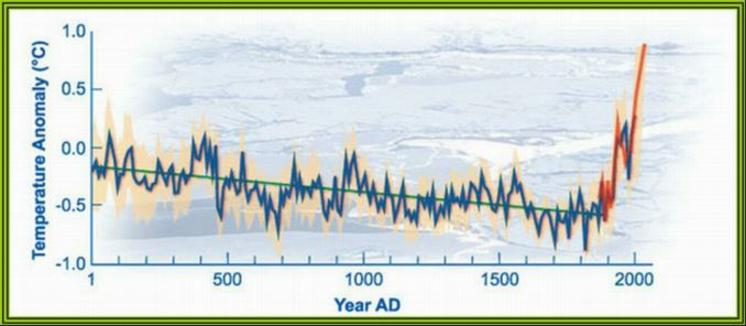From Climate Central:
By Andrew Freedman Published: May 27th, 2010
The National Oceanic and Atmospheric Administration (NOAA) announced today that the 2010 hurricane season, which officially begins on June 1, is likely to be an “active to extremely active” one, with a 70 percent probability that 14 to 23 named storms will form, 8 to 14 of which will be hurricanes, with 3 to 7 major hurricanes (Category 3, 4 or 5 storms).
“If this outlook holds true, this season could be one of the more active on record,” NOAA administrator Jane Lubchenco stated in a press release.
In calling for an above average hurricane season, the official federal outlook echoes the conclusions of several University and private sector groups, which had already raised alarm regarding conditions in the Atlantic Ocean that appear primed for spawning an unusually large number of tropical storms and hurricanes.
In particular, forecasters point to unusually warm sea surface temperatures (SSTs) in what is known as the “Main Development Region” of the Atlantic – where most hurricanes form. Waters in this region are currently running as much as four degrees Fahrenheit above average. Unusually warm SSTs stretch from off the African coast to the Caribbean, with cooler than average waters in the Gulf of Mexico and near the US Atlantic seaboard.
Warmer waters provide more fuel for hurricanes to form and intensify.
In addition, the decline of El Nino conditions in the Pacific, which had limited Atlantic hurricanes last season, also leads forecasters to predict an active upcoming season. Wind shear, which occurs when air moves in different directions or speeds with height, can inhibit hurricane formation and intensification.
“Wind shear is important for hurricane formation because if you imagine you’ve got weak winds down in the lower parts of the atmosphere, and higher winds in the higher part of the atmosphere, then when the clouds get going, and actually form this hurricane, the upper bit is being tilted away from the lower bit, and that means they can’t get this efficient process going to develop the hurricane circulation,” said Greg Holland, a tropical meteorology expert at the National Center for Atmospheric Research in Boulder, Colorado.
Meteorologists say the current conditions in the Atlantic have eerie parallels to the setup prior to the record-setting 2005 season, which featured the devastating Hurricane Katrina, as well as Hurricane Rita, among many others.
“We have a large number of parallels for the 2005 season, where the sea surface temperatures and the general overall conditions are very similar, with one important difference and that is that they are actually higher. In other words we are now in record conditions in a lot of the area,” Holland said.
There is heightened interest and vulnerability to storms this year because of the oil spill in the Gulf of Mexico and the fact that Haiti, which is a hurricane-prone nation, is still picking up the pieces after a catastrophic earthquake in January. A direct hurricane strike on the island is a frightening prospect, considering that thousands of people are still camped in tent cities as they await the completion of reconstruction efforts.
Although speculation regarding how a hurricane would interact with the sheen of oil is rampant, it’s not clear what would happen. However, there are high odds that a tropical storm or hurricane will either form in or enter the Gulf during the season, according to NOAA.
“Historically, all above normal seasons have produced at least one named storm in the Gulf of Mexico, and 95 percent of those seasons have at least two named storms in the Gulf,” NOAA stated.
Jeff Masters, chief meteorologist for Weather Underground, a private forecasting company based in Michigan, wrote on May 26 that the oil could boost water temperatures in the Gulf of Mexico, thereby helping a storm gain strength in that region. He said that beaches already befouled by oil might be cleaned in a storm, but that a hurricane’s broad reach of winds and waves would also spread oil to regions that would not otherwise have been affected by the spill.
“The strong winds and powerful ocean currents that a hurricane's winds drive will bring oil to large stretches of coast that otherwise would not have gotten oil. This is my chief concern regarding a hurricane moving through the Deepwater Horizon oil spill,” Masters wrote.
Great stuff - Increased ocean heat brings on stronger Hurricanes, which stir up oil which increases ocean temperatures, which bring on even stronger Hurricanes, which...
Imagine Katrina, but stronger, pushing oil all over everything, along with the storm surge....
I can hardly wait...
Welcome to By 2100!
This Blog is designed to be a Diary of Events illustrating Global Climate Change, and where it will lead.
Commentary is encouraged, but this Blog is not intended for discussion on the Validity of Climate Change.
Category Labels
- Climate Events (85)
- Climate Solutions (45)
- Videos (42)
- Climate Statistics (39)
- The Deniers (34)
- Humour (15)
- Basic Information (5)
Friday, May 28, 2010
Subscribe to:
Post Comments (Atom)
www.know-the-number.com
Our Climate is Changing!Please download Flash Player.

No comments:
Post a Comment